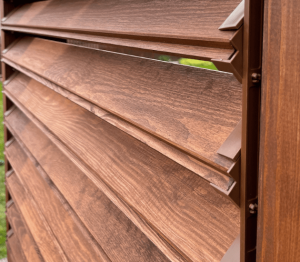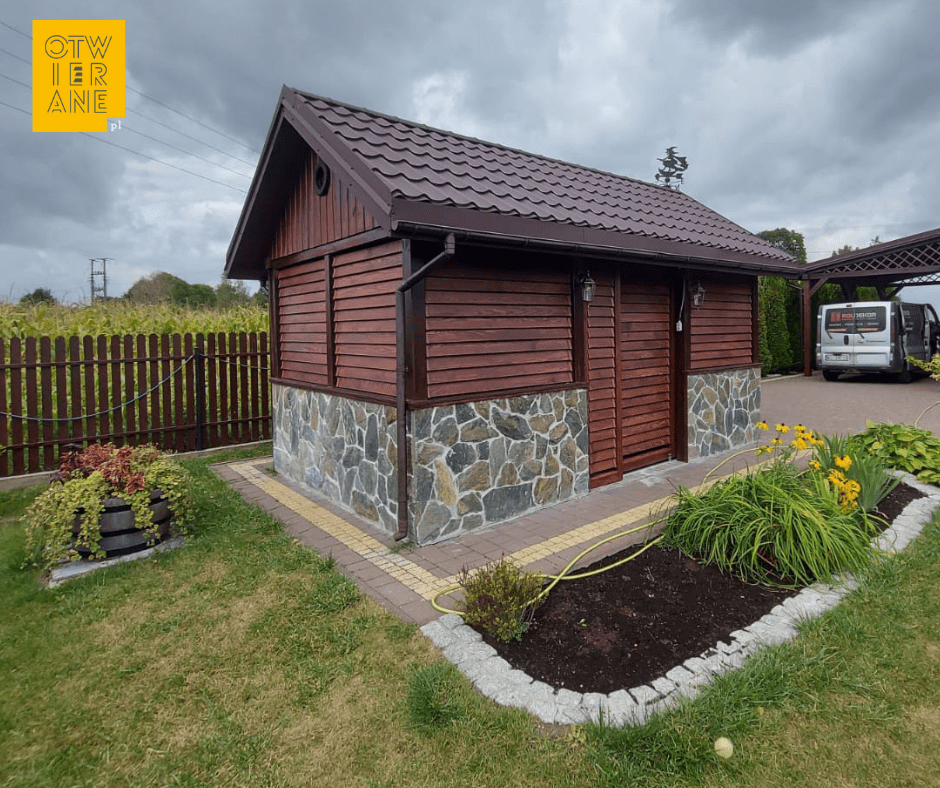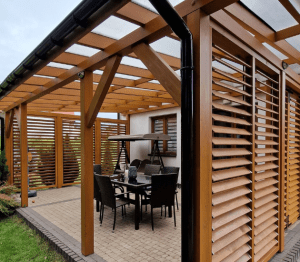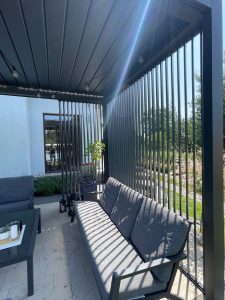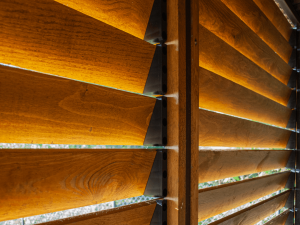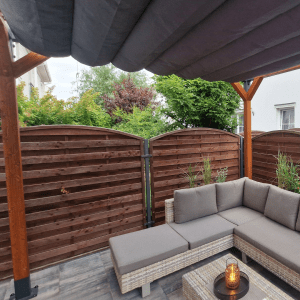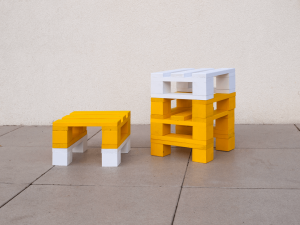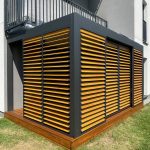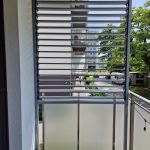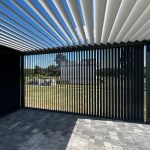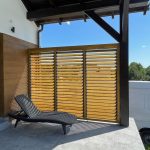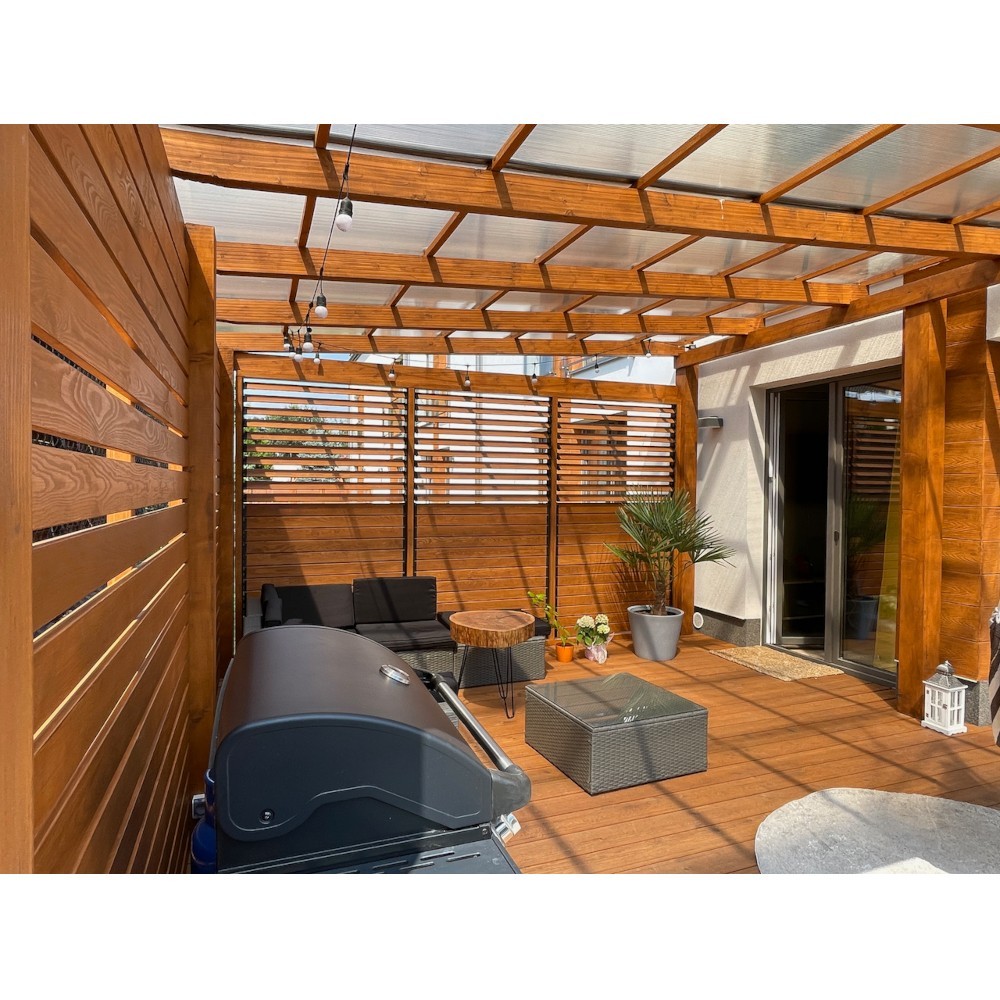
How do I choose, protect and care for movable timber external blinds for patio development?
Find out how to look after the wood for your movable outdoor blinds. Are you dreaming of movable wooden patio blinds and want to know what to do to make them last as long as possible? Read on!
You are wondering whether it is worth having movable blinds? If the unique look of your home, the natural beauty of your garden and the comfort of your leisure time are something you care about, the answer is - YES.
Wooden blinds protect your terrace, gazebo, windbreak or balcony from the sun, wind and rain. You can use them to enclose a gazebo, pergola or even a balcony.They do not heat up like metal. They do not let the sun's rays through like polycarbonate or glass. They will provide a nice chill even on a hot day. Tightly sealed flat, they will allow you to enjoy a dry seating area even in the jamming autumn rain. All provided will be made of high quality wood and properly prepared before installation.
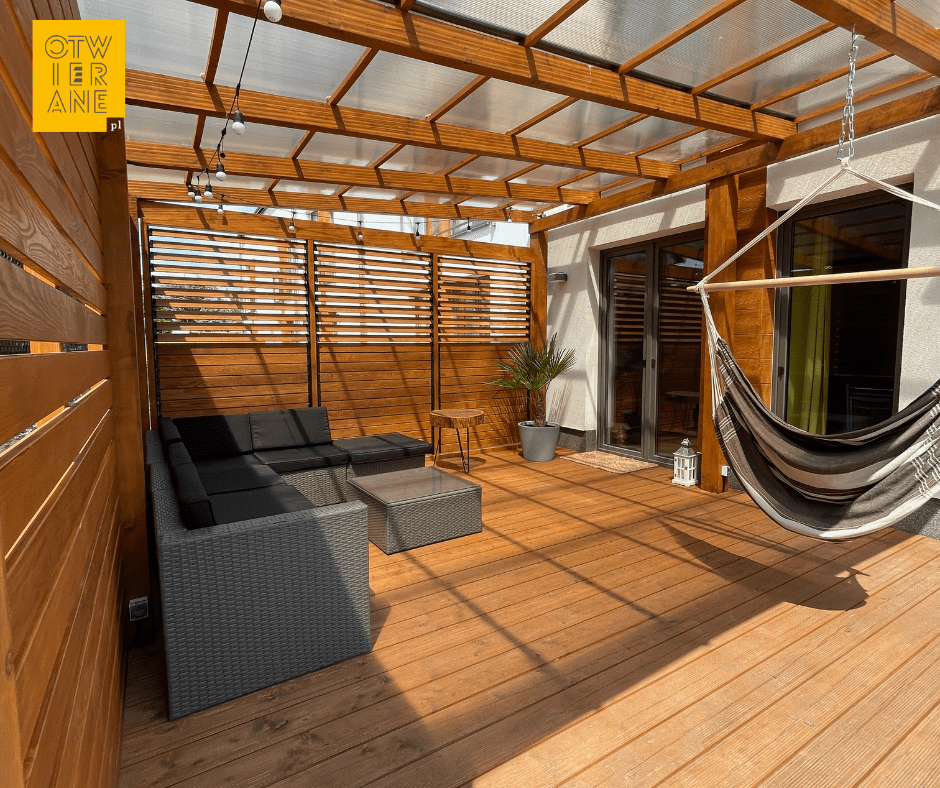
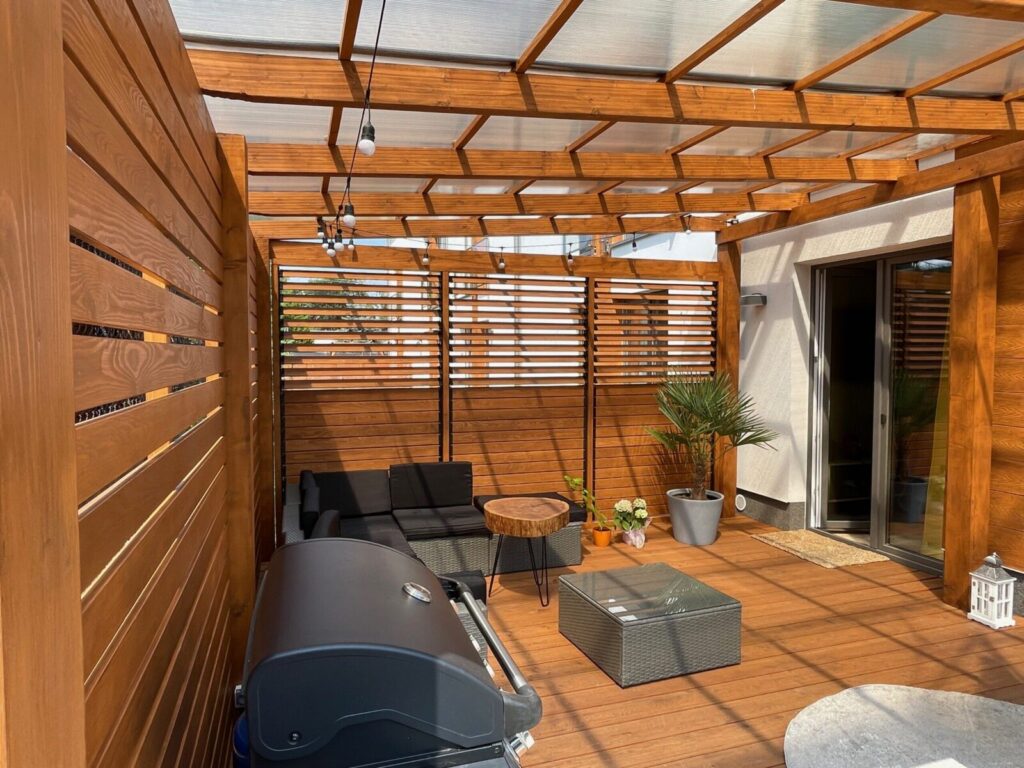
What length of boards should I choose for wooden blinds?
For the wooden louvre bracket system we offer, we propose board modules with lengths from 600 to 1200 mm (ready-made sets - 1035 mm). The solution designed by us assumes the use of boards no longer than 1200 mm. This is the only way to ensure safe installation and use. In the visualisations under REALISATIONS you can see what a great effect we achieve with these dimensions.
However, if you insist on using longer boards, you do so at your own risk. You thereby forfeit the guarantee on our products.
How do I protect the building boards with movable garden blinds?
To optimally protect the wood of the installed external blinds, follow these steps.
- Once the boards have been cut, sand them and then clean them of dust. They will look perfect later.
- Paint the boards on each of the six sides with a wood preservative. Allow to dry completely.
- Choose the colour you want to paint your blinds. Cover each side of them carefully with it. This is important to minimise dampness and dust.
- When installing movable external blinds, make sure that the built-in frames are set at a sufficient distance from the ground. The idea is to protect them as much as possible from being washed away by rain and prolonged contact with water.
What wood to choose for movable external blinds for home and garden?
The following are most commonly used for wooden blinds pine or larch wood. These are species commonly found in Poland (pine constitutes 60% of the Polish tree stock), so they are readily available and - in contrast to exotic species - relatively cheap. They are used as a construction material for timber frame houses, recreational cabins, sheds, gazebos or just outdoor blinds, but also furniture. Although they undergo a suitable treatment process at the sawmill, becoming resistant to insects, fungi and mould, they require periodic care. Both, however, easily absorb impregnants and other preservatives.
Pine boards for the installation of external blinds
Pine wood is resilient and quite soft, so it is easy to work with. It can be sawn, planed, turned, milled and sanded without any problems. At the same time, it is relatively strong and resistant to mechanical damage. It provides good thermal insulation, dries quickly and is absorbent, so saturates well with both waterproofing and stain. Because it is a light wood by nature, They can easily be tinted to any shade. In addition, it has antistatic properties and does not collect dust, so it is recommended for allergy sufferers. With its beautiful grain and distinctive aroma due to the presence of resin, the pine exterior blinds are surrounded by feel even closer to nature. This is a very good wood for movable external blinds.
Larch boards for the installation of terrace blinds
Larch wood is lightweight, dries easily and is low in shrinkage, meaning it will not react rapidly to extreme weather conditions by changing volume and shape. It is lighter than pine, and left in its natural colour it yellows more slowly. However, this used for the exterior has to be treated with impregnation and painted, preferably with a paint with a UV filter. As larch boards are less resinous than pine boards, this is even easier. The outdoor durability of larch wood is estimated at 70 years.
Regardless of the choice between pine or larch wood, the most important thing is that the material, i.e. the wood for the movable external blinds for the terrace development, is of good quality. Without pests or fungi, well dried. With as few knots or other blemishes as possible.
How do I look after my wooden external blinds?
- A basic recommendation for the installation and subsequent use of wooden external blinds is to protect them from excess moisture. Therefore, if you use them to enclose a terrace area, make sure that the water accumulating there drains away properly and that the gutters are tight and unobstructed.
- Every 3 to 4 years, wooden blinds must be treated. In order to impregnate the wood on your movable outdoor blinds, first remove them so that you have free access to every surface. This is neither difficult nor troublesome, as they are easy to remove thanks to the brackets we offer.
- Installed wooden blinds should not be burdened additionally. They are a decoration in themselves, so it is not necessary, for example, to let climbing plants climb over them. All the more so as these direct contact with vegetation promotes moisture accumulation and attracts insects and wood pests.
Where to get the wood for movable timber external blinds?
Welcome to our shop www.otwierane.pl. We offer both handles for movable external blinds by a Polish manufacturer (openupsystem.pl) as well as matching boards. The wood for the boards comes from from befriended companies. We carefully select our business partners to be able to provide our customers with the highest quality products. The rest is in your hands.

